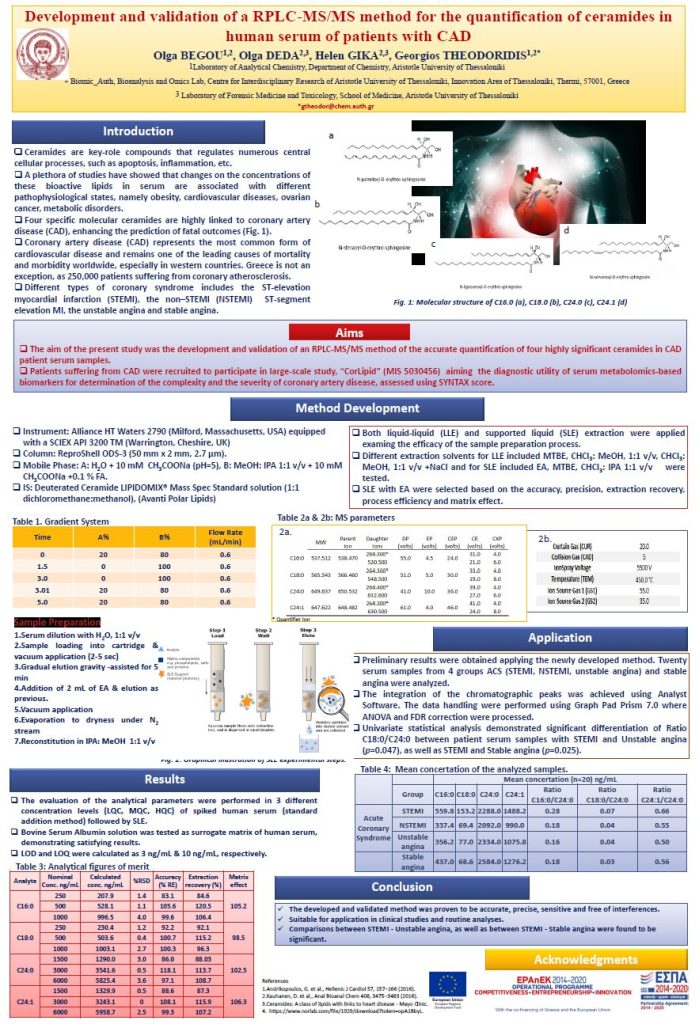Metabolomics profiling
Metabolomics aims at the analysis of the whole small molecule (metabolite) complement of a sample in order to relate metabolite levels with certain characteristics or properties of the sample. Metabolomics brings together high-level analytical chemistry with advanced statistical analysis, biochemistry, and other sciences such as medicine/life sciences, agricultural, or environmental sciences. To achieve these ends, metabolomics employs multidisciplinary research necessitating collaborative efforts from scientists from different fields.
Metabolomics provides good potential in understanding biochemical mechanisms such as disease biochemistry, because metabolite profiles offer a snapshot of the ongoing biochemical phenomena. Metabolites can be directly linked with physiology and phenotype because metabolites are further down the biochemical pathway compared with genes or proteins. As a result the field exhibits the strongest annual growth rates among the “omics” fields.
Our UPLC-MS metabolomics platforms are based on QTOF instruments and a combination of commercial and bespoke software. Data is generated by expert metabolomics researches. Data is treated by advanced software and candidate markers are compared versus proprietary reference library that includes more than 10.000 MS, MS/MS and IMS (ion mobility) spectra and retention times.
Our GC-MS metabolomics platform employs dual derivatisation and the use of laboratory and commercial spectral libraries for more than 6.000 analytes.
In these platforms we have more than 16 years experience, studying, developing, validating and applying metabolomics research in life, food and nutrition sciences. We have successfully realised more than 35 peer reviewed/funded projects and 50 demonstration research studies. This activity has resulted to more than 130 research publications, more than 290 conference presentations and the establishment of 60+ protocols.
Applications
What are the essential amino acids?
Amino acids are organic compounds composed mainly of nitrogen, carbon, hydrogen, and oxygen. Our body needs 20 different amino acids for its proper function and nine are considered essential: lysine, valine, histidine, methionine, isoleucine, leucine, phenylalanine, threonine, and tryptophan. Essential amino acids can only be obtained from diet and are the core of many vital processes.
Available Tests
Untargeted Metabolomics analysis
Send your request at info@thetabiomarkers.com
Related Articles
Plasma lipidomic and metabolomic profiling after birth in neonates born to sars-cov-2 infected and non-infected mothers at delivery: Preliminary results, Kontou A. et al.
Lab Report Writing – an Introduction
Lorem ipsum dolor sit amet, consectetur adipisicing elit, sed do eiusmod tempor incididunt ut labore et dolore magna aliqua. Ut enim ad minim veniam, quis nostrud exercitation ullamco laboris nisi ut aliquip ex ea commodo consequat duis aute irure dolor in
Where can I go to provide a sample for testing?
Our country possesses approximately 170 billion barrels of oil that can be recovered with today’s technology. Of that number, 165 billion barrels are located in the oil sands.
What happens to my sample once I have provided it?
Our country possesses approximately 170 billion barrels of oil that can be recovered with today’s technology. Of that number, 165 billion barrels are located in the oil sands.
How long does testing typically take before results are available?
Our country possesses approximately 170 billion barrels of oil that can be recovered with today’s technology. Of that number, 165 billion barrels are located in the oil sands.
What will laboratory testing cost me?
Our country possesses approximately 170 billion barrels of oil that can be recovered with today’s technology. Of that number, 165 billion barrels are located in the oil sands.

